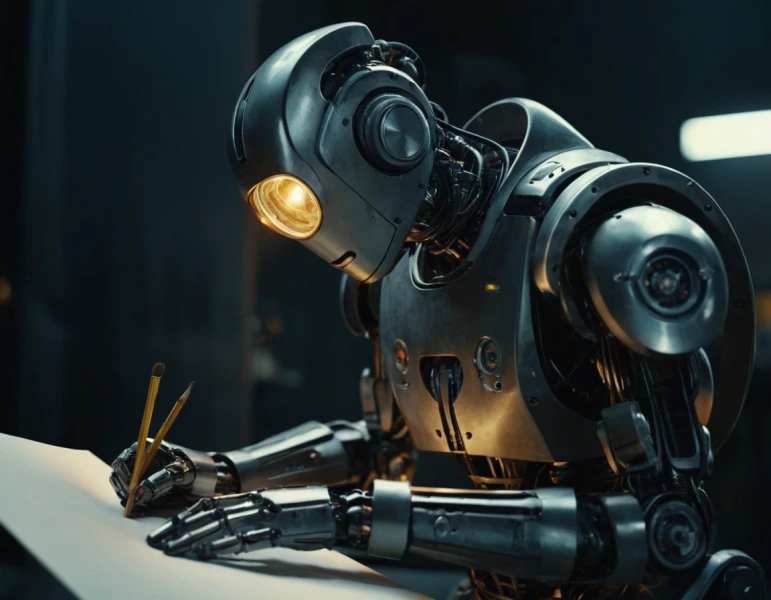Educa UNIVERSITY|SCIENCE AND ENGINEERING
Robot Drawing: The New Frontier of Art Told
Related Masters
Robot Drawing: The New Frontier of Art Told
Hello, I'm Amadeo Pérez! If you're here it's because, like me, you're fascinated by how technology keeps surprising us, even in fields as human as art. Today I'm going to talk to you about drawing robots, a marvel that merges creativity with technology. And yes, I speak with authority because I have spent years watching them evolve and discovering how their use is changing our way of understanding drawing.
What are drawing robots?
A drawing robot, or drawing robot, is a machine equipped with robotic arms and tools such as pencils, brushes or markers. Unlike printers or plotters, these devices imitate human strokes with a precision that can be hypnotic. Their operation combines sensors, algorithms and, in many cases, artificial intelligence (AI), allowing them to interpret images and capture on canvas or paper their own versions.

In short, they don't just copy, they create, and they do it in a way that sometimes leaves you speechless. Imagine a mechanical arm drawing a portrait that looks like it was done by a Renaissance master.
My first experience with a drawing robot
It was 2005 when I first saw a robot capable of drawing. It was a huge, noisy, impractical machine, but what it accomplished on paper was simply breathtaking. It was like seeing Da Vinci in a mechanical version!
Today, these robots have evolved so much that you can find compact, high-precision and even affordable models. If you're curious or thinking about getting one, I recommend exploring options like Line-us, a sort of mini artist robot that fits on your desk.
How do they work?
I'll explain it to you straightforwardly. How these robots work is the result of a combination of hardware and software:
- Hardware: It includes robotic arms, sensors and drawing tools.
- Software: Here's the magic. They use algorithms to process visual information and transform it into precise movements. Some even use AI to learn and improve over time, adapting to different styles.
If you're an architect or designer, these machines can help you create detailed sketches with a speed and precision that will make you feel like a creative genius, even if you're drawing from scratch.
Uses of drawing robots
Although it sounds futuristic, drawing robots are already among us in multiple sectors:
- Art and entertainment: Exhibitions featuring robot-created works are becoming increasingly common.
- Education: They are used as tools to teach students about art and technology in an interactive way.
- Technical design: Perfect for plans and details that require pinpoint accuracy.
- Creative Industry: From animations to unique illustrations.
Are they a threat to human artists?
Many people fear that these machines will replace artists. But, as I always say, "the machine has precision, but we have the soul". A robot can draw with perfect technique, but human art carries with it an emotion that cannot be programmed or replicated.
Advantages of using a drawing robot
Accuracy and speed: In seconds, they can accomplish what would take a human hours.
Adaptability: They learn from each stroke to constantly improve.
Assisted Creativity: Combining your ideas with the robot's skills takes art to another level.
Assisted Creativity: Combining your ideas with the robot's skills takes art to another level.
Faculties
Trainings
The faculties embrace diverse academic disciplines and fields of study, opening doors to new perspectives and exploring different spheres of wisdom in a constantly evolving world.














